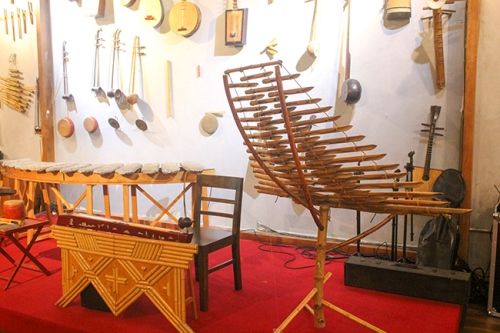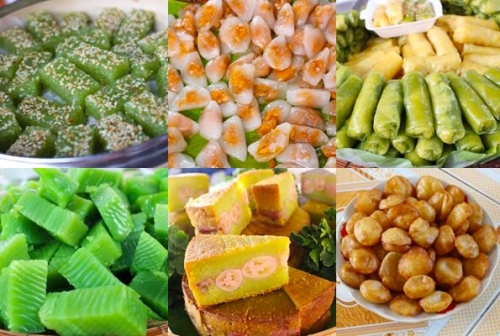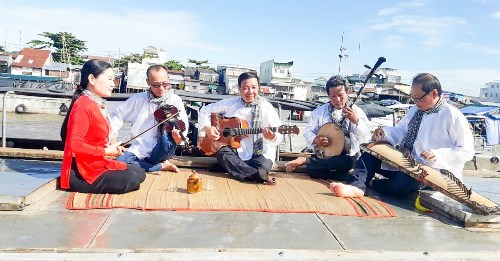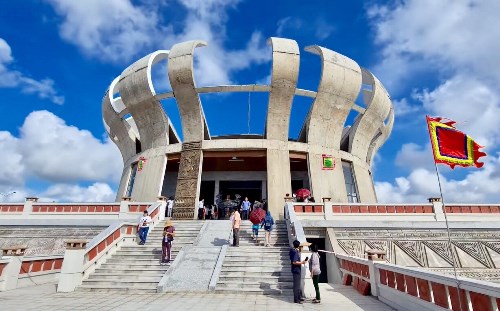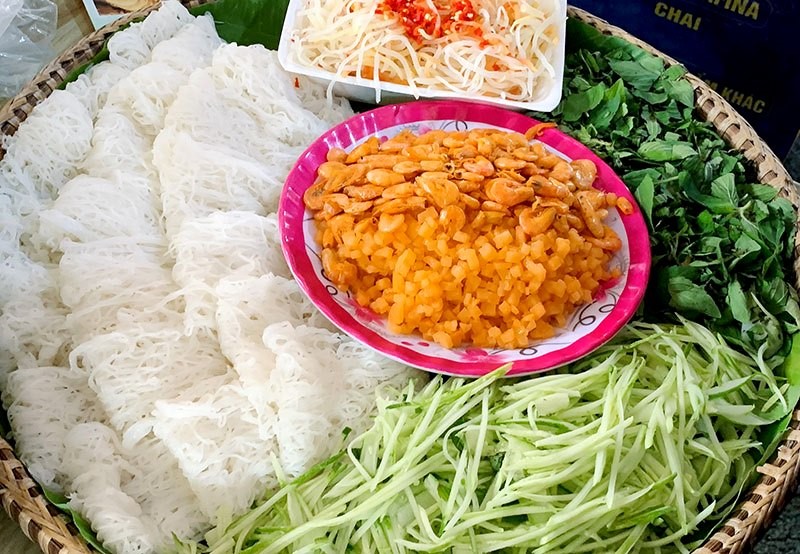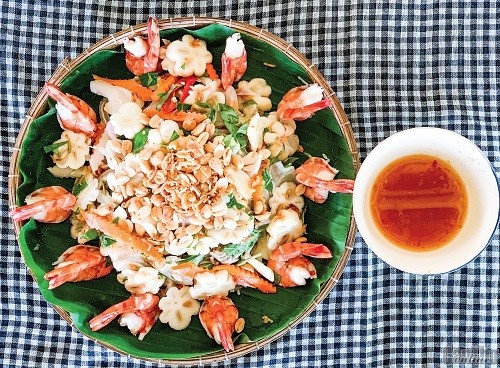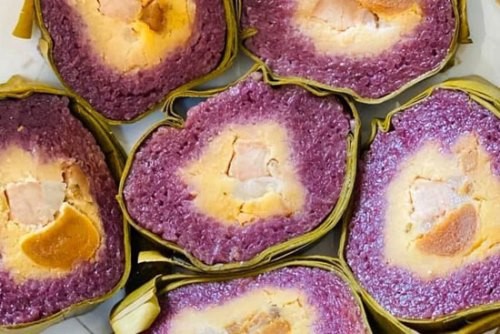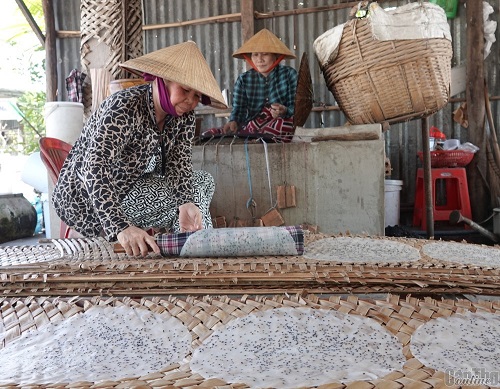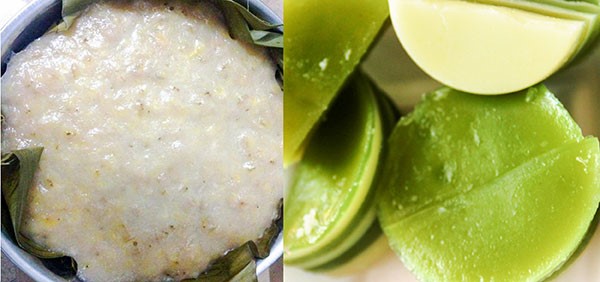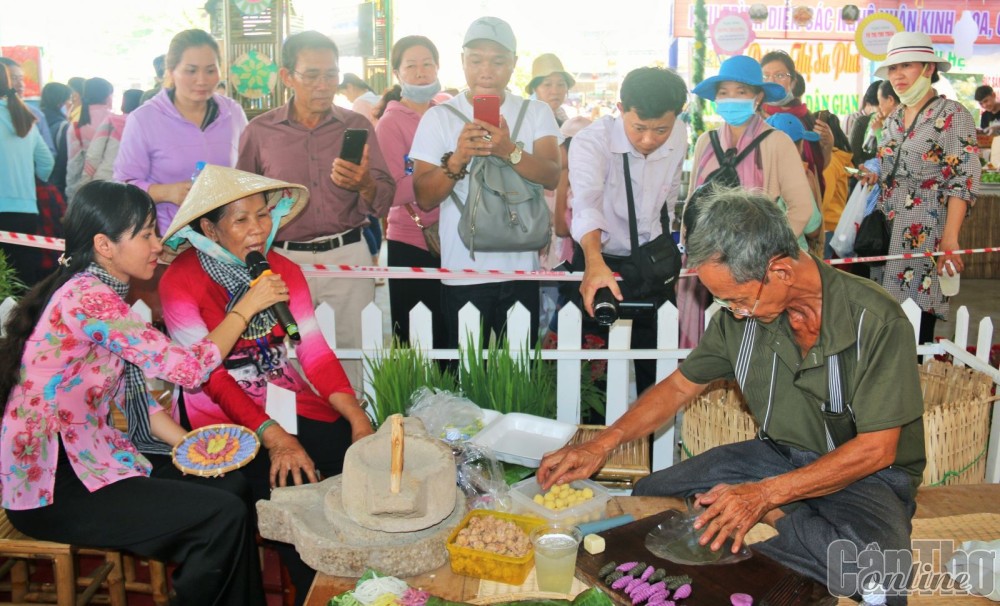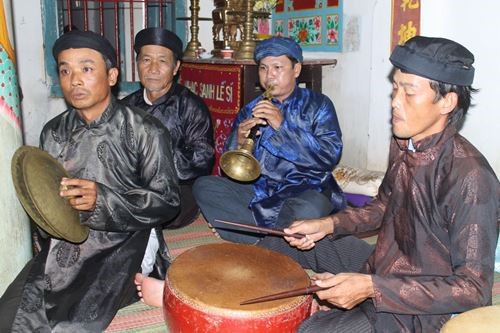
Depending on the needs and the conditions of materials, artisans can make skin drums of all shapes and sizes: double-sided drums, single-sided drums, drums with straight, bulging or hourglass-shaped wooden ribs (or tang in Vietnamese), drums with a length of 2 meters and a diameter of 1 meter. Others are drums whose suffaces at both ends are wrapped by nailing, or strained by a drawstring system that attaches to the holes at the edge of the skin on the drum surface. The material of the drum surface is the skin of the animals (most commonly horned ones). The drum rib is made of a tree log carved by heat, or pieces of wood assembled or ceramic (according to To Ngoc Thanh in The record of culture and music). Several factors determine the sound a drum produces, including the skin type, shape and construction of the drum shell, the type of drum heads, and the tension of these drumheads. However, the most common drums sound deep and warm “dooom dooom."
The uses of skin drums also reflect Vietnamese culture, activities and habits.
- Large drums are used in formal ceremonial occasions, at court, in sacred worship places such as communal houses, temples, shrines ... They are most commonly used in festivals or public gatherings. Lôi cổ, a large drum with 8 surfaces, is only used in extremely important and sacred ceremonies such as Tế Trời or Nam Giao preformed by the king himself as the celebrant or the great governor on his behalf in case the king was not healthy. This kind of drum is used to summon the government officials to royal meetings.
- Medium drums (trống chầu) have similar designs of the large ones, are usually placed on a rack or hung horizontally or vertically, and are often used at exam places or schools, or to beat in rhythm for prayers’ bowing movements in sacred places. They are also common in fun folk festivals; in singing competitions to reward or punish performers; in large processions (along with small drums and other musical instruments) such as "Vinh quy bái tổ" procession to honor the valedictorian in the national examination.
- Small drums (trống con/tiểu cổ) have a lot of types:
+ Long drums include trống cơm (rice drums) or phạn sĩ/phạn cổ ba/ phạn chiêm ba/yêu cổ. The two ends are wrapped with skin, slightly pulled in. The drum surface is about 20cm in diameter, and wooden ribs are 80-100cm long. Before using the drums, the musicians have to put the hot rice mash to the surface of the drum to adjust the pitch of the sound. The performers are required to move their bodies to the rhythm (not dancing) and tap the drum surface with both hands. The drams are often used as an opening in the ceremonial music performance.
+ Different from trống cơm is trống bông, or trống bồng/cổ bồng with hourglass shaped ribs. These single sided drums with a neck trap are often used in a pentatonic orchestra. Its soft sound is called “tâm” and the strong one is "bông".

Drummer in a lion dance. Photo: Duy Khoi
+ Trống bồng, with hourglass - shaped ribs, looks like a flask. The neck of the drum is a hollow wooden tube, flared at both ends to connect the surface with the body (the bulging lower part is made of earthenware, sometimes the whole body is terracotta). The surface is wrapped with python skin, attached to the body by a system of strings. People have different ways of beating the drum (by hand) depending on the music type either Bồng chập, Bồng ba,or Bồng tư. Groups of players or giạ nhạc in the Sough of Vietnam rarely use trống cơm and trống bồng, so it may be said that these two drums originated from the Central region are no longer used now.
+ Trống bắc khấu, or bát cấu/bất cấu are similar to trống bồng , but without the strap and are played very fast with two sticks.
+ Short, or very short, drums called trống bảng are put on a small and high shelf (3 cross sticks), often used in processions, funerals, and played with big sticks.
Another type called trống khấu or tiêu cổ is similar to trống bảng but smaller. It has a handle and is played with sticks. Another type is trống bóng, or trống lệnh (“to order”) which is smaller than trống khấu. Trống tầm vông is similar to trống bảng but played with hand. The dancers often play this type of drums with big sticks for greeting. Trống bộc, or trống mảng is single sided and the smallest in ancient orchestra..
Regarding short drums, Southerners often use them in pair and call them with quite funny names: male and female drums. In fact, they are literal and martial drums that the ceremonial orchestras often use at the same time.
Shaking little drums are used as the advertising cry of dyers with their dying tools on shoulders walking or riding bicycles along the street. The drum handles are similar to trống khấu’s, but are more beautiful. On the drum side, there are two strings with the length of the radius of the drum surface. Each string end is attached with a small round piece of lead. When the handle is shaken back and forth, the lead taps on the drum surface creating funny sounds "taratantara, taratantara, taratantara". Because they are small and fun to listen to, people make them as small as a rice bowl, wrapped python skin, frog skin, or soft transparent paper, attacked with round candle wax for children to play. These paper drums are called trống bỏi.
In addition, immovable drums trống đất are put on the ground. To make this kind of drums, people first dug a hole, put the firewood down to bake the soil in the hole to be hard (the harder the soil, the louder the sound). A thin wooden plank is put across the hole. They tie a rope across the plank and tied to the sticks on both sides of the hole. They use a stick on the plank to stretch the rope. When performing, they use small sticks to hit the rope. Monochord was originated from this kind of drums. Similarly, military drums trống quân are made of large and long rattan ropes, beaten with two small sticks, and they sound as loud as skin drums.
Finally, stone drums trống đá/cổ thạch are the heaviest, made of stone, beaten by wooden batons. These drums are rare and hardly used.
***
The above is a summary of the traditional types of drums, yet depending on the style and construction they may have different names and uses. The most special in Vietnamese skin drums is cổ bề, the most sacred of the large drums. Both ends are wrapped with the skin of horned animals. The drums are about 50-60cm in diameter, or more. When beaten, they produce very deep and loud sound (like thunder), so they are also called thunder drums trống sấm. Enlarged in the middle, the drum ribs have an iron ring to hang on a rack or a hook for two people to carry on their shoulders.
In the middle of the surface is a “lưỡng nghi” symbol, a circle divided into two equal parts by an S-shaped curve. Each part has a small white point in the larger end. One half painted red symbolizes yang, and the other black symbolizes yin. The yin-yang, or heaven - earth symbol refers to the "the nation/the country”, so the drumming of thunder drums signal the ultimate command.
"Trống tràng thành lung lay bóng nguyệt,
Khói cam toàn mờ mịt thức mây.
Chín tầng gươm báu trao tay,
Nửa đêm truyền hịch định ngày xuất chinh…”
Trường Thành thunder drums’ sounds shake the moon reflection up.
The smoke from Cam Tuyền rises high into the cloud.
Hundreds of treasured swords are handed over to the soldiers,
In the midnight is the announcement for them to advance into the battle... ”
(Chinh phụ ngâm)
Ancient people also used thunder drums when fighting against enemy.
Source: Can Tho Newspaper - Translated by Diep Truong





